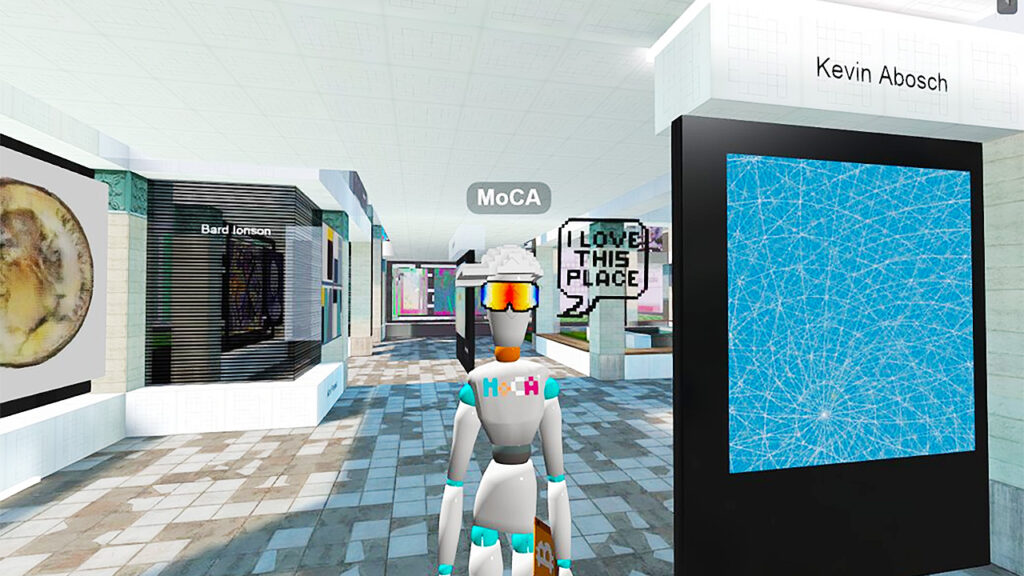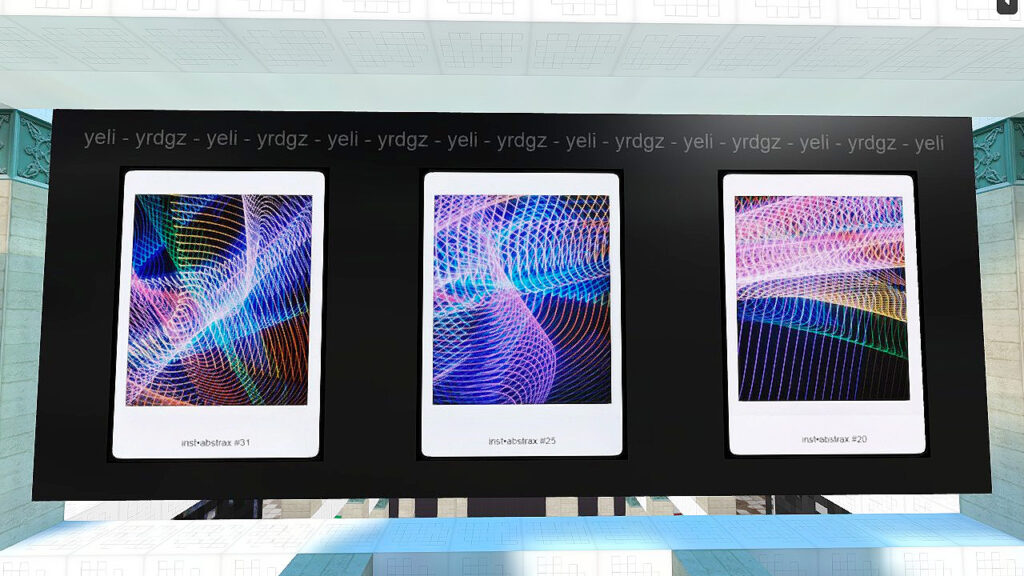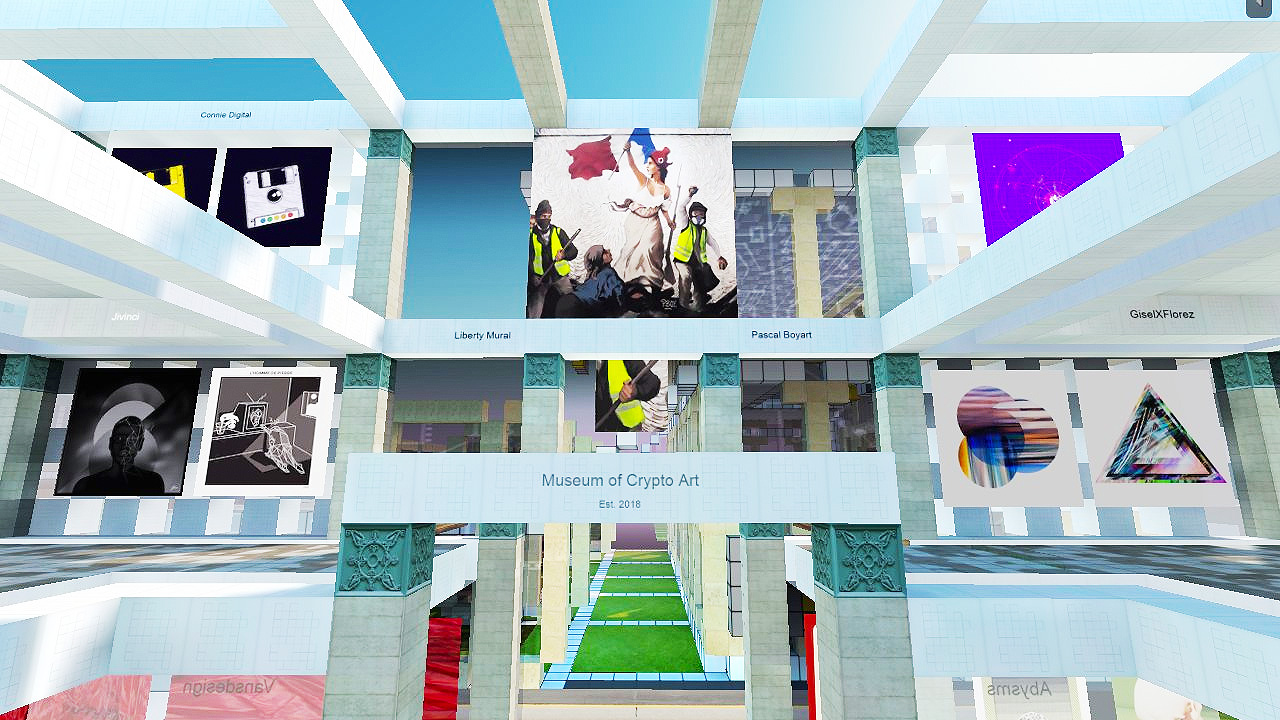The word “metaverse” came into existence via Neal Stephenson’s 1992 novel Snow Crash. Nearly 30 years on, what was once a science fiction construct is now a highly profitable reality. What started as detailed virtual environments have become entire universes built on blockchain technology, trading in cryptocurrency, and facilitating real-time interactions. And like all new hot commodities, everyone wants a piece.
Earlier this week, crypto enthusiasts attended “Into The Metaverse,” an event co-presented by LeBook and Tmint at Carreau Du Temple in Paris to explore how NFTs and the metaverse are reshaping cultural industries. Among the art industry experts on the panel was Benoît Couty (also known as BnoiitC on KnownOrigin), founder of the Museum of Crypto Art (MoCA).

Kevin Abosch’s “Sun Signals” within MoCA. Image: @museumcryptoart on Twitter
Established in 2018, MoCA is built in the Ethereum-hosted metaverse, Cryptovoxels, and in its brief lifetime, has actively exhibited and collaborated with digital creators from Pascal Boyart to Kevin Abosch to, most recently, Obvious, while helping to grow the once-nascent crypto community. With over 3,000 square meters of space, in addition to multiple satellite galleries, MoCA is easily accessible (no software is required to enter the virtual museum) and awake to the commercial opportunities presented by the metaverse. “Crypto enables the metaverse,” Couty tells Jing Culture & Commerce. Within MoCA’s virtual galleries, visitors can click on artworks to view their details, but also, make a purchase. “It’s very easy,” he adds.
Below, Couty expands on the potential of the metaverse as a space for cultural experiences, social networking, and greater interconnectivity.
How do you see the metaverse right now?
Four main projects have a [crypto] business model: Decentraland, Sandbox, Somnium Space, and Cryptovoxels. In all four projects, you buy and own land and build your business, but each platform is very different. For instance, Decentraland is more corporate, whereas Sandbox is more gaming-oriented. Cryptovoxels is different from the others because it’s a plain white canvas: there are no aesthetics and you do whatever you want. This is nice for artists because they can express themselves better in [Cryptovoxels], whereas in Decentraland, there is already a landscape you cannot change.
What commercial opportunities does the metaverse present institutions and brands?
[The metaverse] is like a 3D website. Instead of scrolling down the page, you walk around the page with your avatar. And instead of scrolling down images, the images are on the walls. So you can advertise like how you would advertise on a website, but more integrated, like a game experience.

Yeli’s inst.abstrax series on display at MoCA. Image: @museumcryptoart on Twitter
For institutions interested in entering the metaverse, what are some initial first steps you suggest they take?
First, they need crypto wallets. It’s a major step because [institutions] don’t know how to do that. It’s a specific way of having custody of your assets because you cannot trust the bank with your critical assets. It’s difficult to secure one in the context of a company because you need to appoint people who will be signatories, and it’s a security issue. It’s not easy, but everyone will eventually go through the learning curve and learn how to secure their assets.
In your view, what’s next for the metaverse?
The four metaverses have different clients, but the next step is to interconnect them together. For me, the real metaverse is a place where you can change platforms. You have your own avatar, wearables, and wallet, and you can go from one platform to another seamlessly. And all those interconnected platforms will make the metaverse a singular world.
That’s why when Facebook announced they would work on the metaverse, I’m not sure it’s ideal. I believe Facebook will put up gates like having to do authentication, and you will not seamlessly interact with other [metaverses] because it will be Facebook [metaverse]. So I don’t see how Meta will fit because Facebook has this business model of centralizing everything, and the metaverse is decentralized and open.
Do you believe the metaverse will become widely adopted as, say, other digital communities like social media platforms and large-scale gaming platforms?
Of course. The metaverse could be a social network. You have your avatar, and you can interact with other avatars and text or voice chat with someone you meet. You could have showrooms, corporate showrooms, galleries or museums, and host people. You can have your place in the metaverse, just like you have your place in real life.



